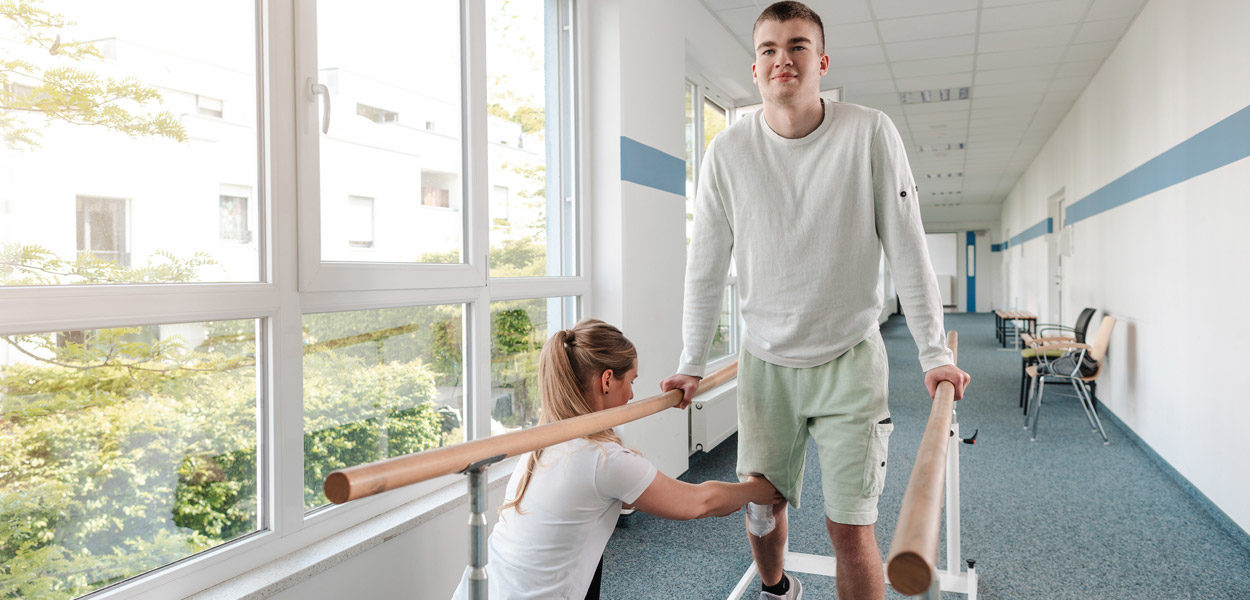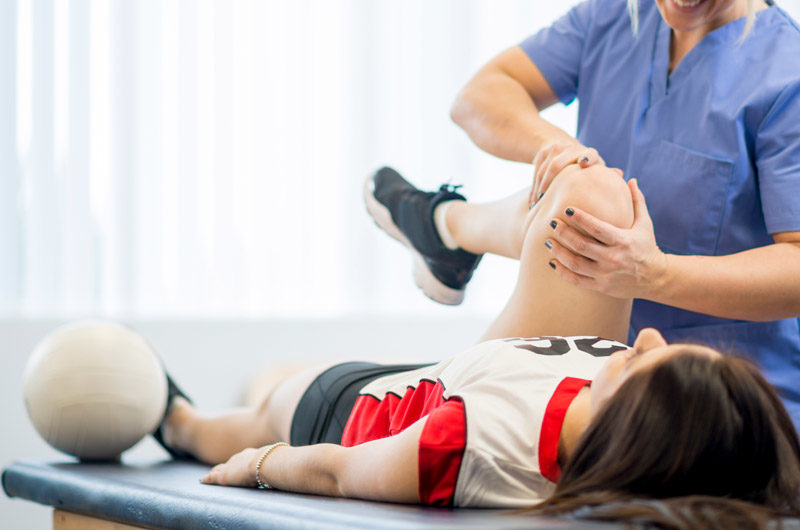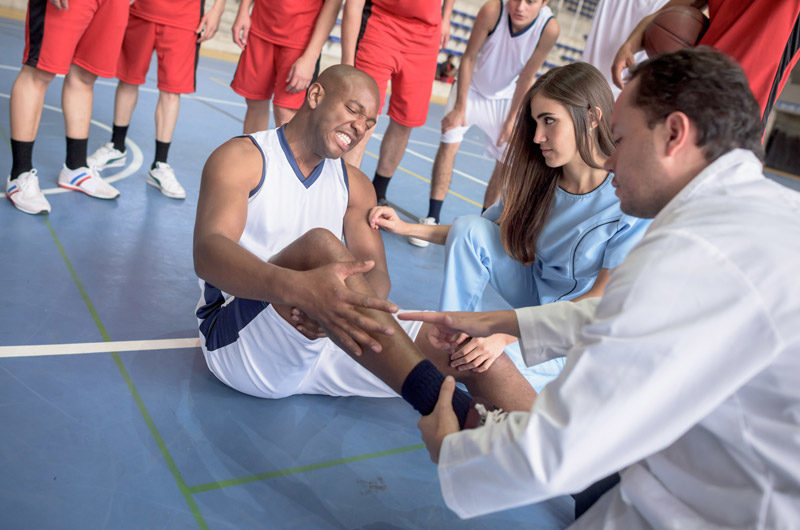section-1414e32

section-018cc4c
Rehabilitation for sports injuries involves physical therapy designed to restore optimal physical form and function.
Types of Sports Injuries
A sports injury can be classified as macro-traumatic or micro-traumatic. Macro-traumatic injuries are typically caused by a strong force, such as a fall, collision, accident, or laceration. This type of injury commonly occurs in contact sports, such as football and rugby.
Micro-traumatic injuries are chronic injuries caused by overuse of a muscle, ligament, tendon, or joint. This type of injury commonly occurs in swimming, rowing, and cycling.
Goals of a Rehabilitation Plan
A rehabilitation plan takes into account the main goal of the injured patient, or athlete, which is to resume athletic activities. Therefore, a rehabilitation plan should seek to minimize the severity of an injury, reduce or reverse loss of function, and prevent, correct, or heal the disability.
section-24f3387


section-c8617d2
How a Rehabilitation Plan is Created
A patient’s rehabilitation is overseen by a multidisciplinary team, headed by a physician. The team may also include sports physicians, physiatrists, orthopedists, physical therapists, rehabilitation workers, physical educators, coaches, athletic trainers, psychologists, and nutritionists. The rehabilitation team will work with the athlete and coach to set rehabilitation goals, discuss progress, and set a realistic timeframe for the return of the athlete to competitive sports.
Main Principles of Rehabilitation
The first principle of proper sports rehabilitation is to avoid aggravation. Therapeutic exercises should not cause any pain, swelling, or further injury. The second principle covers timing. Sports rehabilitation should begin as soon as possible to help the patient return to full activity sooner rather than later. Athletes may continue to train the part of the body that has not been injured.
For a rehabilitation program to be successful, patients must understand the goals and expectations of the program. Athletes should be included in the decision making process to help motivate and engage them. This will also help support the athlete’s focus and endurance.
Every patient will have a personalized rehabilitation program that takes into account the type of injury, severity of the injury, and the patient’s individual response to the program. The patient’s physical therapist will closely monitor their progress and make adjustments to the rehabilitation program as necessary.
Every rehabilitation program follows a specific sequence of events that is determined by the body’s physiological healing process. In other words, exercises will progress and become more difficult in sync with the body’s natural healing process.
The rehabilitation team will closely monitor the athlete’s progress and physical response to the exercises. The physical therapist will be careful to increase intensity without causing aggravation.
The final principle of rehabilitation is focused on treating the whole patient. This means the rehabilitation program should seek to maintain the entire body’s previous range of motion, coordination, strength, and muscle endurance. The patient will be given exercises targeting uninjured limbs and joints. This will help prepare the patient physically and psychologically for complete rehabilitation.
Components of a Rehabilitation Program
Patients will receive medication to support pain management, flexibility training to improve joint range of motion, strength and endurance training, proprioceptive re-education to restore proper function of the muscular receptors, coordination training, functional rehabilitation, orthotics (if necessary), and psychological therapy to help the athlete prepare mentally for return to athletic activities.
